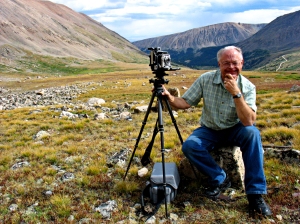As a photographer, I shoot anything that moves. Or doesn’t move. Or might move onto a page in someone’s magazine.
But sometimes you have to be careful about what you shoot and show. Really careful.
I recently spent a week in Miami at the 2009 Healthcare Globalization Summit. As usual, I wandered the streets looking for images. Returning each night to the parking lot, I was greeted by the pleasant Hispanic man in his 40s who manned the gate. Slightly plump, with dark curly hair, a couple of days’ stubble, and a slightly rumpled T-shirt and jeans, he looked like any one of the thousands of Hispanic men who kept Miami running for the benefit of the richer and more privileged Anglos.
One night as I pulled into the lot, he sat with his feet perched up on the desk, absorbed in his newspaper. Illuminated by the overhead light, he looked like one of Edward Hopper’s images of night people. On an impulse, I asked him if I could take his picture. We struggled a bit with his fragmentary English, but eventually he got the idea, then smiled and assented. Hurrying to my room, I loaded film into my classic Ensign 16-20 and arrived back with camera and tripod.
We began talking as best we could while I set up my equipment. I came to understand that he was from Columbia. Struggling to convey something to me, Eduardo (not his real name) became frustrated, pulled out a folder from beneath his paper, opened it, and laid it out for me to read.
I was surprised to have an asylum application appear before me on the first page. Fascinated, I read on. My anonymous Hispanic friend was a Colombian attorney from Bogota, had been active in Colombian politics, assisting in rallies aimed at attempting to free hostages held by FARC.
The Revolutionary Armed Forces of Colombia (Fuerzas Armadas Revolucionarias de Colombia, or FARC), a Marxist-Leninist revolutionary guerrilla organization, has been the main protagonist in the in the ongoing Colombian Civil War for more than 40 years.
Originally established in the 1960s as a people’s movement in reaction to repeated and systematic human rights abuses by the US-backed Colombian government, FARC and its nonviolent political wing FARC-EP’s tactics have degenerated over the years into kidnappings, hostage-taking and political murders. The group became involved in the cocaine trade during the 1980s to finance itself.
Losing its popularity, FARC has faced widespread criticism throughout Columbia, expressed recently through large rallies during 2008. Eduardo, as an attorney involved in human rights cases, became involved in the public reaction against FARC.
Soon threats ensued, and a friend and associated disappeared. His bloodstained body was found a few days later. Faced by escalating persecution and the very real fear of kidnapping, torture and murder, Eduardo, his wife, and their three children fled to Miami and applied for political asylum.
However, as best I could tell from Eduardo’s fractured English, they didn’t run far enough, and threatening phone calls began again after they arrived in Miami.
So that is their situation- a young family, both parents trying to make enough money to survive in a country where they do not speak the language, and dealing with death threats while they wait to see if the government will grant them asylum. Yet Eduardo was always cheerful, friendly, and helpful, giving no sign of the way his life is going. Could I do as well? I’m going to remember this the next time I start to worry about my bank balance.
I did take his picture. It’s still on the undeveloped roll in my camera. But I won’t put it on a web site where it can be seen in Colombia. I’ll keep it for myself and wonder when I see it how this courageous man is doing.



